The New Dawn Climbing Rose (Rosa ‘New Dawn’) is a timeless favorite among gardeners, celebrated for its stunning beauty and exceptional performance. Belonging to the Rosaceae family, this woody, climbing rose thrives in hardiness zones 5 through 9. It is also known by names such as Everblooming Dr. W. VanFleet and New Dawn.
Renowned for its semi-double to double blooms, this rose boasts a delightful apple-like fragrance that enhances any garden. Its vibrant flowers, coupled with remarkable disease resistance and robust climbing ability, make it a standout choice. Recognized for its excellence, the New Dawn Climbing Rose holds a prestigious place in the Hall of Fame of the World Federation of Roses Societies.
If you’re looking to add elegance and charm to your garden, this rose is a reliable and rewarding addition.
| Common name | Everblooming Dr. W. VanFleet, New Dawn, New Dawn Climbing Rose, The New Dawn |
| Botanical name | Rosa ‘New Dawn’ |
| Family | Rosaceae |
| Life cycle | Woody |
| Plant type | Rose |
| Hardiness zone | 5, 6, 7, 8, 9 |
| Sunlight | Full Sun |
| Maintenance | Medium |
| Soil condition | High Organic Matter |
| Soil ph | Acid |
| Drainage | Well-Drained |
| Growth rate | Medium |
| Spacing | 6 – ft. – 12 ft. |
| Flowering period | Fall |
| Height | 1- 15 ft. |
| Flower color | Pink |
| Leaf color | Gray, Silver |
| Fruit color | Burgundy, Red |
| Stem color | Brown, Copper |
| Fruit type | Drupe |
| Flower benefit | Fragrant |
| Garden style | Cottage Garden |
| Uses | Vertical Spaces |
I. Appearance and Characteristics
Rosa ‘New Dawn’ is a light pink modern climbing rose cultivar, discovered by Somerset Rose Nursery in New Jersey in 1930. The cultivar is a sport (genetic mutation) of Rosa ‘Dr. W. Van Fleet’. ‘New Dawn’ was the first plant to be patented. It was patented by H.F. Bosenberg in 1931. ‘New Dawn’ was voted the most popular rose in the world at the 11th World Convention of Rose Societies in 1997. It is also recognized worldwide as one of the best of the repeating climbing roses. ‘New Dawn’ is an Earth-Kind rose.
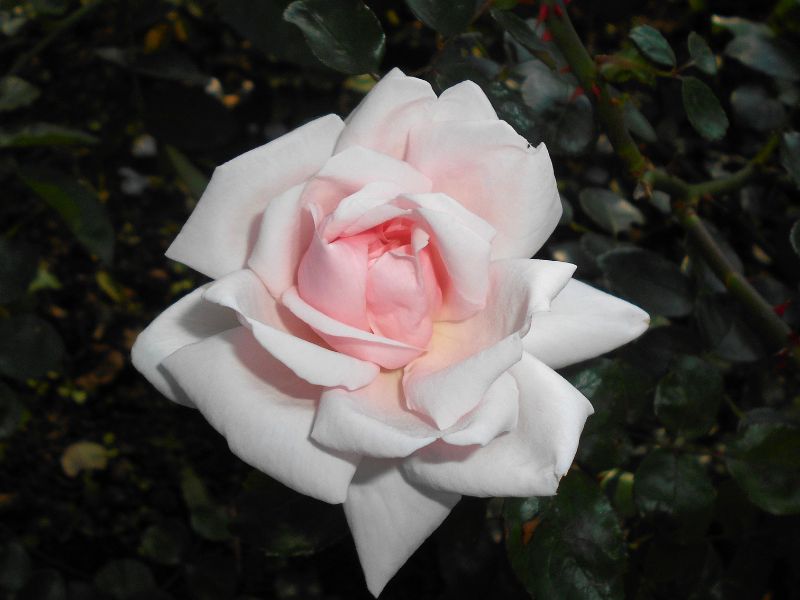
‘New Dawn’ is a tall, large-flowered climbing rose, 10 to 20 ft (305–610 cm) in height with a 5 to 6 ft (152–182 cm) spread. Blooms are 3.5 in (8.9 cm) in diameter, with 26 to 40 petals. Flowers have a high-centered, cupped to flat bloom form, and are borne singly or in small clusters. The flowers are light pink in color with a paler pink at the edges, aging to white as the flower matures. The rose has a mild, sweet fragrance and medium-sized, glossy, dark green foliage. In autumn, the rose produces a large number of rose hips. ‘New Dawn’ blooms in flushes during the growing season, and will often continue to flower through the middle of winter. The plant is recommended for USDA zone 5 and warmer.
II. How to Grow and Care
Sunlight
Roses ‘New Dawn’ favors full sun and also can tolerate a half shade environment. In partial shade, it usually only grows leaves and does not bloom. Even if it has flower buds, the flower is neither gorgeous nor fragrant. As a result, it is recommended that gardeners ensure sunlight at least 6 hours per day during the growing season (but not necessarily in winter). In summer, it should be appropriately shaded to prevent overexposure to sunlight.
Temperature
Roses ‘New Dawn’ is widely distributed from cold temperate zones to tropical areas. It likes cool, ventilated environments and is not tolerant of high temperatures. The optimum temperature range is 15 to 26 ℃. Some species can tolerate temperatures as low as -26 ℃ and high temperatures of up to 35 ℃. When the temperature is below 4 ℃ in winter and above 30 ℃ in summer, the plant becomes semi-dormant and has poor growth. The flowers during this period will have a few small, white petals with a dim and lusterless color and are not good-looking at all.
Roses ‘New Dawn’ favors moist conditions but is not resistant to water-logging. It can tolerate moderate drought. Provide more water from budding to flowering, but reduce watering after blooming time. After blooming, wait to water again until the soil is basically dry to avoid any accumulation. Ensure good ventilation and drain excess water during the rainy season to prevent damage to its roots.
Watering
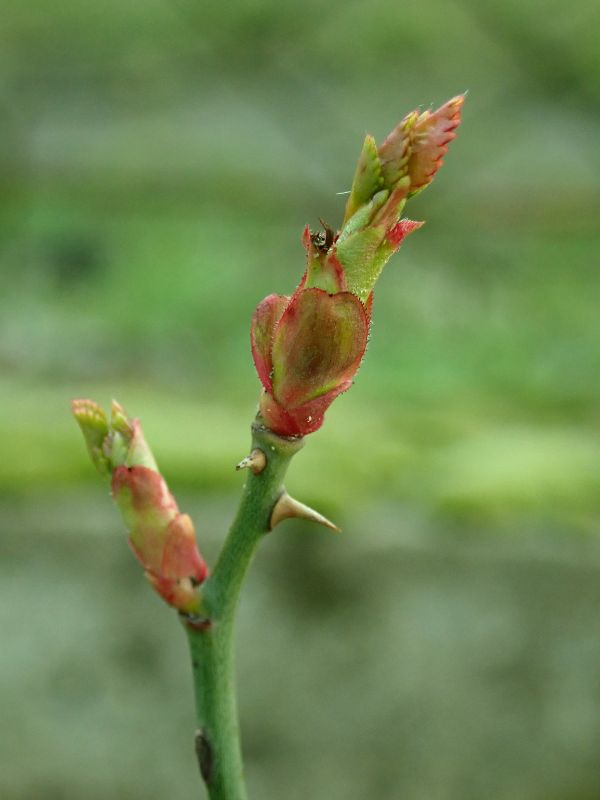
Roses ‘New Dawn’ thrives in well-hydrated conditions, reminiscent of its origins where consistent moisture is prevalent. This species exhibits a preference for evenly moist soil and demonstrates moderate drought tolerance once established. Regular watering is crucial, particularly during its active growth phase, equating to twice a week to maintain optimal hydration. Roses ‘New Dawn’ is predominantly cultivated outdoors where it can benefit from natural rainfall patterns, which contribute significantly to its watering needs. The plant’s flowering potential is closely tied to adequate water provision, ensuring a vibrant display when moisture levels are well-managed.
Soil
Roses ‘New Dawn’ can adapt to a variety of soil types and grows best in acidic soil which is fertile, loose, and water-drained. When planting in the garden, you should choose a place on higher terrain with sufficient sunlight, good air ventilation, and slightly acidic soil. Planting in high terrain helps avoid water accumulation in soil. Before planting, deeply loosen the soil and use organic fertilizer as base fertilizer. If planting as a potted plant, use humus-rich and slightly acidic sandy soil.
Fertilizing
For roses ‘New Dawn’, fertilize with balanced, slow-release fertilizers in spring at the onset of growth; switch to high-nitrogen variants just before the blooming period to encourage robust flowers. Apply quarterly, reducing frequency in fall to prevent new growth vulnerable to frost. Use recommended doses on labels to avoid root burn. During dormancy, limit fertilization to maintain natural growth cycles. Use caution: over-fertilization can damage roses ‘New Dawn’ or promote diseases. Ensure even distribution and water well after application. Healthy fertilization promotes vigorous growth, richer blooms, and enhances roses ‘New Dawn”s resilience.
Planting Instructions
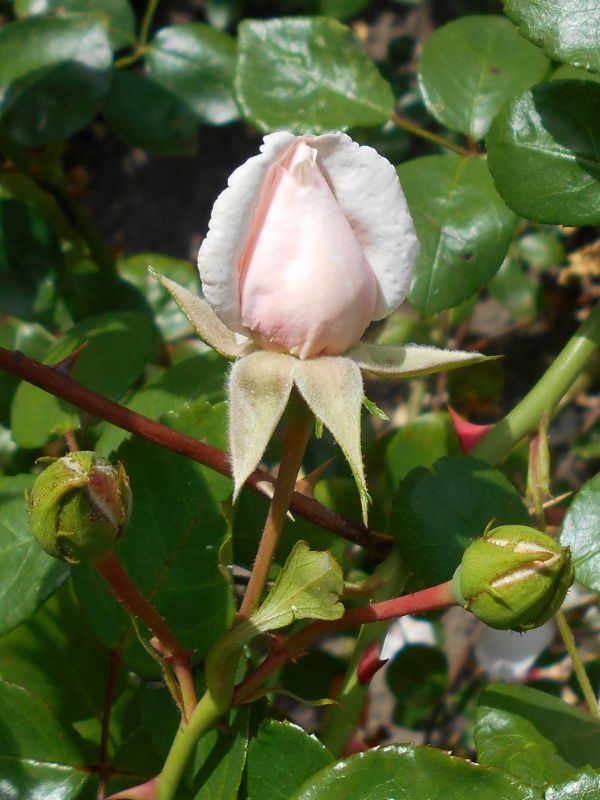
If planting potted roses ‘New Dawn’ in your garden, it’s best to find a suitable site with adequate sunlight, fertile soil, good drainage, and preferably a place that hasn’t been planted with any roses before. A field that previously grew roses may increase the probability of infection.
Transplanting can be done in all seasons except winter. First, dig a pit that is twice as big as the flower pot. Add a small amount of base fertilizer to the pit, and place the root system or root ball into the pit so that the root crown (where the aboveground part and the underground part connect) is at or slightly higher than the surface of the soil. Backfill and slowly compact the soil. A layer of organic mulch can be used to cover the soil surface for heat preservation of roots and also reduce the growth of weeds. Water thoroughly after transplanting and water often in the first week to avoid wilting caused by a lack of water.
If transplanting roses ‘New Dawn’ from one part of the garden to another, do it in fall to avoid the cold of winter. Water the plants three days before transplanting; this makes it easy to dig up and retain the root balls. Then, trim off the overlong branches and excessive leaves, leaving 3-4 branches per plant to reduce excessive consumption of nutrients and ensure its survival.
Prune any unhealthy roots left after being dug up., If a bare-root rose cannot be immediately planted after purchase, it can simply be placed into a pit and covered with soil. If it has already gone without water for some time, it’s better to soak its roots in water for half an hour before planting to help it recover. It is recommended to plant bare-root roses in gardens in the fall.
Pruning
Roses ‘New Dawn’ has a strong sprouting ability and grows luxuriantly. Without proper, timely pruning, it will attract diseases and pests in hot, humid, insufficiently lit, or poorly ventilated conditions. After the first bloom, the plant should be slightly pruned. Promptly cut off faded flowers and thin, overlapping branches, leaving only young and strong branches. During winter dormancy, careful pruning is recommended.
For vines, keep main branches at 2 to 3 m long and cut off the rest. For bush plants, cut 1.02 cm above full buds, prune the whole plant to 1/3 of its original height, and leave 4-6 thicker branches while ensuring that the overall shape of the plant meets your desired appearance.
Propagation
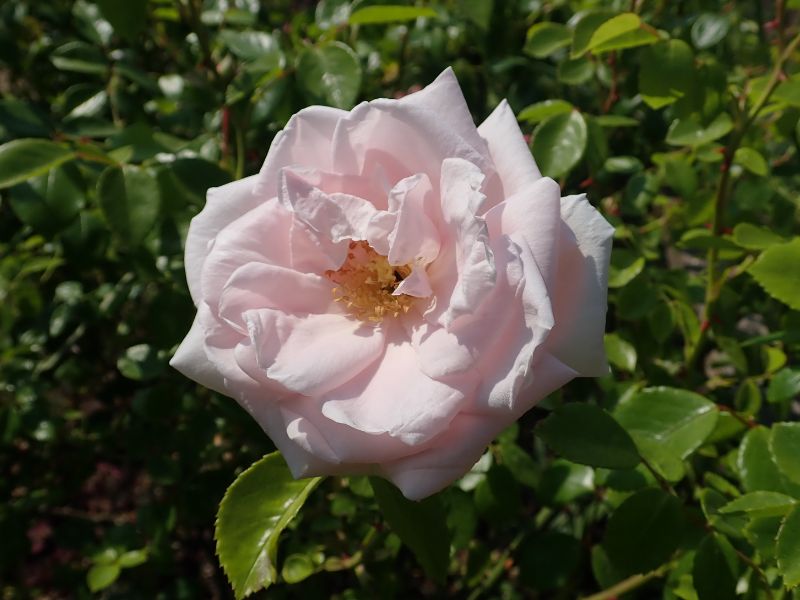
Roses ‘New Dawn’ can be propagated by grafting. Multiflora rose (Rosa multiflora) is often used as rootstock for grafting. Generally, grafting is carried out from the end of summer to the beginning of autumn, and the grafting part is as close to the ground as possible. Cut a T-shaped cut on the outer skin of the rootstock with a knife on one side of the stem and branch, then select a bud from the middle of a well-developed branch in the same year, cut the bud with bark, insert it into the T-shaped cut, bind it with plastic film, and place it in proper shade. It can usually be untied 15 days after grafting, and will germinate and survive after 30 days.
You can also select a branch that has not yet developed a leaf bud as a scion if the thickness of the scion is more similar to that of the rootstock. Cut a 2 cm deep cut on the rootstock longitudinally, insert the scion into the cut, and then fasten it with plastic film. The incision will heal after about 10 days.
Roses ‘New Dawn’ can also propagate by division. It can be planted deeper and filled with soil to the roots so that new roots can grow at the bottom of each branch. In the early spring or late autumn, the whole plant can be dug out with soil to be divided into ramets. Select a stem with 1-2 branches and some fibrous roots, and then separate it from the whole plant and plant it in a basin or garden. At the same time, prune the branches on the ground to reduce the evaporation of water and improve the survival rate of transplanting.
Cutting propagation, another useful way to propagate roses ‘New Dawn’, is generally carried out in spring and autumn. Branches with 3-4 buds can be cut off to use. The substrate for cutting can be a mix of river sand, rice chaff ash, or vermiculite, etc. Insert the branches into the substrate, shade it properly, and spray to maintain humidity. The branches will take root 20-30 days after cutting, and the survival rate is 70-80%. If the branches are dipped in rooting powder and then inserted into the substrate, the survival rate will be higher. Additionally, the cuttings can be immersed in water for cutting; the cutting temperature is 20 to 25 ℃, and new roots will grow after 20 days.
III. Harvesting and Storage
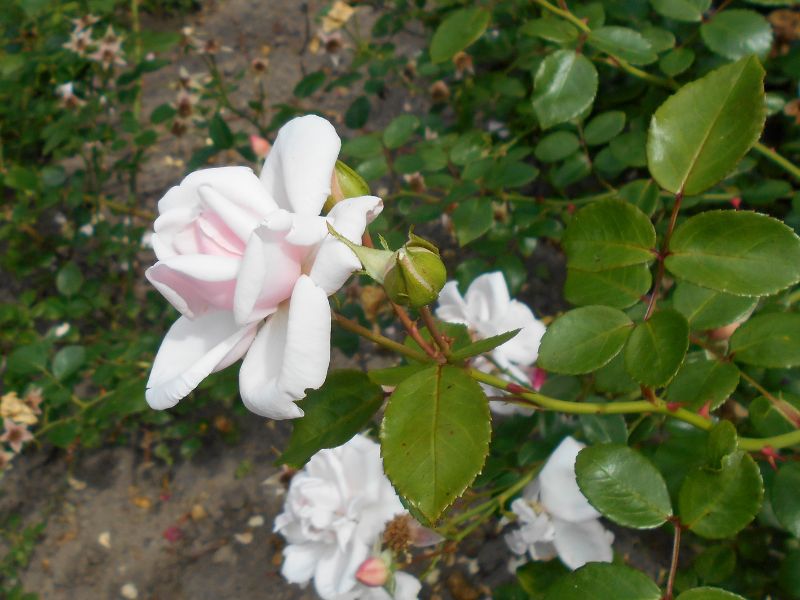
Roses ‘New Dawn’ produces excellent fresh flowers that can be pruned with sharp scissors as soon as they bloom. It is best to pick flowers in the morning to avoid loss of water through plant transpiration at noon. After picking, it is necessary to trim the base of the branch at a 45° angle to increase the water absorption area. Quickly put the flower into a vase with clean water to avoid water loss.
Find Where to Buy the Best New Dawn Climbing Rose (Rosa ‘New Dawn’)


















Leave a Reply